![Baby Heimlich, What to Do if a Baby Is Choking [Full Guide]](https://willnice.net/wp-content/uploads/2024/11/baby-heimlich-1220x669.jpg)
It's every parent's worst fear: a choking baby. Knowing how to respond correctly if choking occurs is crucial for anyone caring for a baby.
Is the traditional Heimlich maneuver safe for babies? What is the modified Heimlich maneuver specifically for babies?
This guide provides clear, step-by-step instructions to safely give first aid to a choking baby. Learn these vital skills to ensure you’re prepared to act effectively in a choking emergency.
Can you perform the standard Heimlich maneuver on babies?
No, performing the standard Heimlich maneuver on babies—infants under one year old—is not recommended. The force exerted by abdominal thrusts may be too severe and could cause injuries.
Instead, infants should receive a combination of back blows and chest thrusts. These methods have been shown through research and practical experience to effectively dislodge an object from an infant's airway with a significantly lower risk of injury. These techniques provide a controlled way to exert force, focusing the impact on dislodging the obstruction while minimizing the risk to other parts of the body.
Why the Standard Heimlich Maneuver is Not Recommended for Babies?
The reason the standard Heimlich maneuver is not recommended for babies (infants under one year old) is mainly due to their anatomical and physiological differences from older children and adults.
- Size and Fragility of Structures: Infants' smaller, more delicate bodies are particularly vulnerable to injury from the force used in standard Heimlich maneuvers. The intense pressure can harm ribs, lungs, and other internal organs.
- Underdeveloped Musculature: Babies have underdeveloped neck and chest muscles, which means they cannot withstand the sudden and forceful impacts or pressures that the standard Heimlich maneuver requires. These muscles are not yet strong enough to protect their internal structures from being harmed by such force.
- Risk of Injury to the Spine: With underdeveloped bones and weak neck muscles, infants are at a high risk of spinal injuries from forceful thrusts.
- Proximity of Vital Organs: In infants, vital organs like the liver and spleen are closely packed and less protected by abdominal fat and muscle, unlike in older children and adults. Therefore, the force from a Heimlich maneuver could simultaneously affect multiple organs, elevating the risk of internal injuries.
To avoid these risks, back blows and chest thrusts are recommended, providing a safe and effective way to clear airway obstructions in infants.
Signs and Symptoms of Choking in Infants
The following signs indicate a severe airway blockage in an infant and require immediate emergency medical intervention.
- Inability to Breathe, Cough, or Cry: The infant cannot make any sounds, indicating a possible complete blockage.
- Silent cough, weak, ineffective, or no cough.
- High-Pitched Wheezing: These sounds may occur when the infant attempts to breathe or cough but the airway is obstructed.
- Cyanosis: Watch for a pale or blue skin color, especially around the lips, which indicates oxygen deprivation.
- Behavioral Signs of Distress: The infant may appear panicked, confused, or show unexpected facial expressions. There may be desperate arm waving without any accompanying sounds.
- Breathing Difficulties: Look for any signs of struggle, such as weak breathing or no breathing at all.
- Loss of Consciousness: If the infant becomes unresponsive, it’s a critical sign that the choking is severe and CPR is necessary.
When to Seek Emergency Help if a Baby is Choking
If you're alone with a choking baby, begin first aid immediately and then call 911 without leaving the baby unattended. Using a speakerphone allows you to continue clearing the baby's airway while speaking with emergency services.
If someone else is present, instruct them to call 911 immediately while you focus on administering first aid.
Situation 1: What to Do If a Choking Baby Can Cough or Cry
- If the infant is coughing forcefully, or crying strongly, let them continue. Forceful coughs and cries can help dislodge the object from the airway.
- Monitor the infant's condition closely. Stay with the baby at all times, watching for any signs of worsening. Be prepared to take further action if the symptoms escalate and the baby’s ability to breathe seems compromised.
- Consider the possibility of gagging. Gagging is a protective reflex that helps prevent foreign objects from entering deeper into the throat and respiratory tract. Common signs include intense coughing and tearing. Gagging often resolves without intervention, but it's important to understand how it differs from choking.
This ensures you know when to intervene or just provide supportive monitoring, based on the baby’s reactions and the severity of their symptoms.
Situation 2: First Aid Tips for a Choking Baby with No Cough or Cry
If the baby cannot cough forcefully, lacks a strong cry, or makes no sound, this may indicate a severe choking incident (complete airway obstruction). Review the signs and symptoms of severe choking as listed above. If any are observed, emergency first aid is required and you must act immediately.
Proceed with the following steps:
Step 1: Position the Infant Correctly
- Place the infant face down along your forearm, supported by your thigh or lap.
- Hold the infant’s chest in your hand and support the jaw with your fingers.
- Ensure the head is tilted downward, lower than the body.
Step 2: Give 5 Firm Back Blows
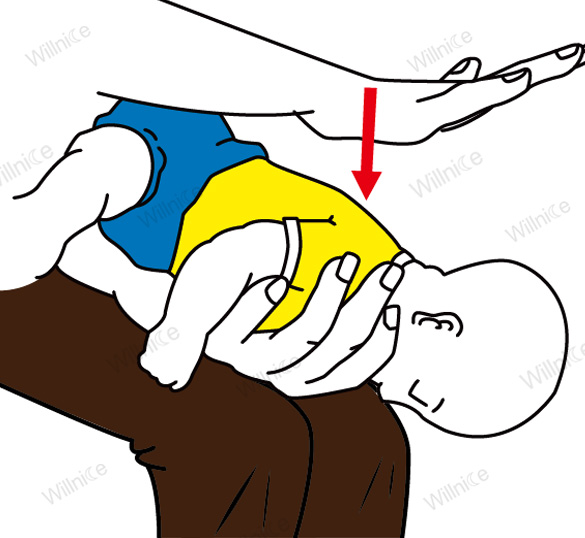
- Give 5 sharp, forceful back blows between the infant’s shoulder blades using the heel of your hand.
Notes:
Use Careful Force: Apply enough force to be effective but avoid excessive pressure to prevent injury.
Do Not Remove Object Manually: If the infant is conscious, avoid attempting to pull out the obstruction with your fingers.
If the object still remains lodged after 5 back blows, proceed with:
Step 3: Reposition the Infant
- Turn the infant face-up on your lap or thigh, ensuring their head is positioned lower than the body.
- Support their head with one hand to prevent it from tilting too far forward, protecting the neck.
Step 4: Give 5 Quick Chest Thrusts
- Locate the center of the infant’s chest just below the nipples and place 2 fingers there.
- Give up to five quick, downward thrusts, compressing the chest to a depth of approximately 1 to 1.5 inches.
- These chest thrusts help expel air from the lungs, potentially dislodging the obstruction.
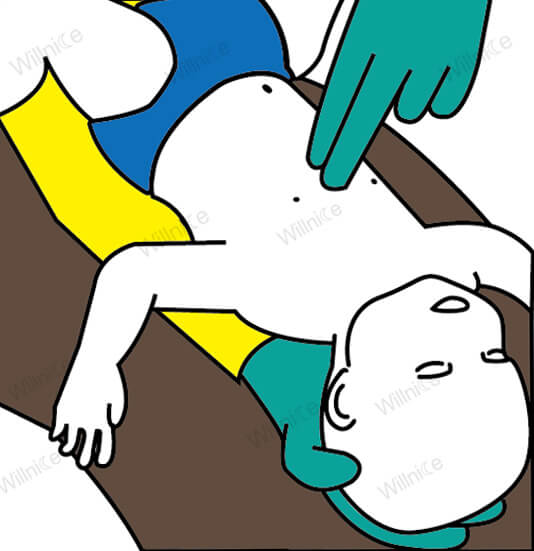
Step 5: Repeat and Alternate if Necessary
Repeat and alternate by giving 5 back blows and 5 chest thrusts. Continue this cycle until:
- The obstruction is cleared.
- The infant can breathe, cough, or cry.
- The infant becomes unresponsive.
Situation 3 If the infant becomes unresponsive, perform CPR immediately
Do not perform back blows or chest thrusts if the infant becomes unresponsive or stops breathing. Instead, begin CPR immediately.
Step 1: Shout for Help
- If someone is nearby, have them call 911 and get an AED while you start CPR. Use the AED as soon as it's available.
- If you're alone, perform 5 cycles of 30 compressions and 2 breaths, then take the infant with you to call 911.
Step 2: Position the Infant for CPR
- Place the infant on their back on a firm, flat surface.
- Kneel beside the baby at a slight angle to prepare for compressions.
Step 3: Give 30 Chest Compressions
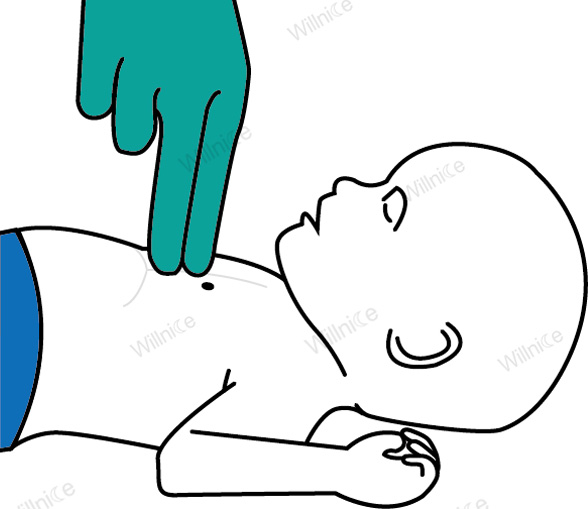
- Place two fingers side-by-side in the center of the infant’s chest, just below the nipple line.
- Give 30 chest compressions: Firmly and rapidly press down on the infant's chest, 30 times, to a depth of about 1.5 inches.
- Maintain a compression rate of 100 to 120 per minute.
After each compression set and before attempting breaths:
- Open the infant's mouth and look for any visible objects.
- If you see an object, carefully remove it with your pinky.
- Avoid blind sweeps with your finger to prevent pushing the object deeper into the airway. Only attempt to remove visible obstructions.
Step 4: Give 2 Rescue Breaths
- Open the infant’s airway to a neutral position using the head-tilt/chin-lift technique
- Give 2 quick breaths into the infant’s mouth, each lasting about 1 second.
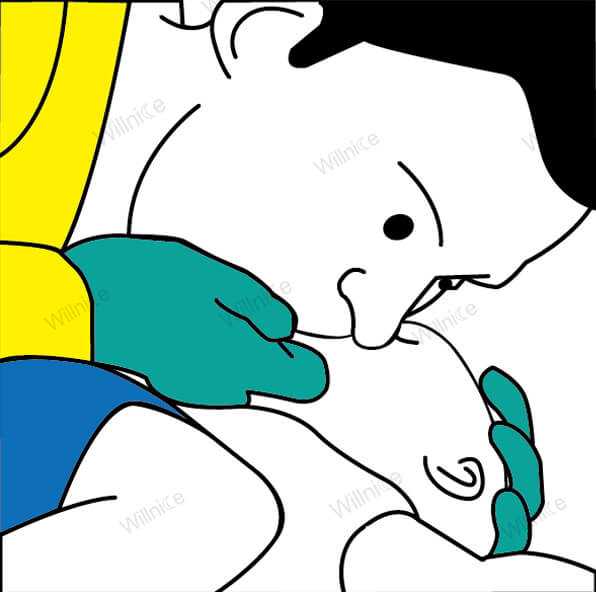
Step 5: Repeat sets of 30 compressions followed by 2 rescue breaths until:
- The infant shows signs of life (moves, cries, speaks, blinks, or reacts).
- Emergency Medical Services (EMS) arrive.
- An AED is ready to use.
Notes:
Use the AED as soon as it arrives on the scene.
Do not stop rescue efforts. Continue following the instructions from 911 operators until professional help takes over.
Causes of Choking in Babies
1. Physiological Development Features
Babies in different developmental stages might not yet have the full physical ability to chew and swallow certain types of foods or manage small objects, which increases the risk of choking.
A baby's risk of choking evolves as they grow, largely due to the development of their oral and motor skills. Here’s how the developmental stages of a baby specifically impact their ability to safely ingest foods and handle objects, thus influencing their choking risk:
Newborn to 4 Months
- Oral Reflexes: Babies at this stage primarily have reflexive sucking and swallowing abilities meant for liquid feeding (breast milk or formula).
- Limited Coordination: They lack the coordination to move solid objects from the front of the mouth to the back for swallowing.
- Risk: Main choking hazards include liquids or semi-solids if fed improperly.
4 to 6 Months
- Beginning of Teething: As teeth begin to emerge, babies start exploring objects by mouthing them, which introduces risks from non-food items.
- Introduction of Solids: Typically, this is the stage when pureed baby foods are introduced. Babies learn to mash food with their gums.
- Risk: Large pieces of food, or those not adequately mashed, can cause choking as babies are still learning to manage different textures.
6 to 12 Months
- Improving Motor Skills: Babies develop better hand-to-mouth coordination, allowing them to grasp and bring food and other objects to their mouth more efficiently.
- Chewing Skills: They begin to chew with up-and-down motion but may not effectively grind food.
- Risk: Small, hard foods or objects and pieces of soft food that can conform to the shape of the trachea (like grapes, cherry tomatoes) pose significant risks.
2. Inappropriate Foods
Babies are at a higher risk of choking on certain types of foods that aren't suitable for their age or development stage.
Common Choking Foods for Babies: Understand the Risks
| Foods to Avoid for Babies | Recommendations |
| Whole Grapes, and cherries | Cut them into quarters to prevent them from lodging in the throat. |
| Nuts and Seeds | These are hard and can easily block a small airway. |
| Popcorn | Its hard kernels and fluffy pieces can become a choking hazard. |
| Raw Vegetables | Hard vegetables like apples, carrots, and celery should be cooked and cut into small pieces. |
| Hot Dogs | Cut them lengthwise and then into small pieces rather than sliced into rounds. |
| Hard or Sticky Candy | Avoid any form of hard candy, gummies, or chewing gum like cough drops, lollipops, marshmallows, caramels, and jelly beans. |
| Chunks of Meat or Cheese | Cut them into tiny pieces or consider grinding them. |
| Peanut Butter | It's thick and sticky. If used, spread thinly on bread or crackers. |
3. Toys with Small Parts
Toys that contain small parts can be hazardous. Babies tend to explore their world by putting objects into their mouths, which increases the risk of choking if the object is small enough to get stuck in their throat.
4. Household Items
Common household items that are small enough to be ingested can pose a choking risk. Anything that can fit through a toilet paper roll is potentially dangerous.
Common Choking Hazards in Babies: Toys and Objects to Avoid
| Choking Hazards | Description |
| Small Toys or Parts | Like small balls, marbles, small figurines, and parts of toys that can detach. |
| Latex Balloons | Uninflated or broken balloons are a choking hazard and should be kept away from babies and young children. Balloons can conform to the throat and completely block the airway if inhaled. |
| Coins | These are common choking hazards due to their size and availability in most households. |
| Small Household Items | Like buttons, small batteries (especially button batteries), beads, small caps from bottles, and pen caps. |
| Jewelry and Watches | Like rings, earrings, watch batteries, and decorative pins, should be kept out of reach. |
| Magnetic Toys | Small magnets, if swallowed, can attract each other in the intestines, causing blockages or even serious injuries. |
| Stuffed Toys with Loose Parts | Eyes, noses, or any small parts that are sewn on can detach and pose a choking risk. Opt for stuffed toys with parts securely fastened and made from durable materials. |
| Pacifiers and Teething Rings | Inspect these regularly for signs of wear and ensure they cannot break into smaller pieces. |
Note: Button Battery Warnings for Parents
Each year, U.S. poison control centers report around 3,500 cases of children swallowing button batteries. The most dangerous are nickel-sized batteries, about 20 mm in diameter, which can lodge in a child’s throat and cause severe damage to the esophagus in just two hours. Such incidents might necessitate the use of feeding and breathing tubes, along with multiple surgeries.
Be vigilant with toys and games containing magnets, and regularly check children’s play areas for any loose or missing magnets. If a button battery is missing from any household item, and you suspect it might have been ingested by your child, seek immediate medical help. Watch for signs of abdominal distress, including pain, nausea, vomiting, or diarrhea.
5. Lack of Supervision
Unsupervised babies may explore and put almost anything in their mouths, leading to a higher risk of choking.
6. Feeding Position
Feeding a baby while lying down or in a reclined position can increase the risk, as it does not allow the throat's natural swallowing process to work correctly.
7. Eating Too Quickly
When babies eat too quickly or are not given time to properly chew or mash their food with their gums, they may be more likely to choke.
Preventing Infant Choking: Safety Tips
- Monitor Eating: Always watch babies and toddlers while they eat. Ensure they are seated and not moving around during meals. Never allow babies to crawl around while eating.
- Always Supervise: Never leave a baby unattended while they are eating or playing with small objects.
- Correct Feeding Positioning: Always have the baby sit upright during meals. Do not feed a baby who is lying down or moving around.
- Proper Food Preparation: Cut foods into small, manageable pieces that won't pose a choking hazard. For babies, this means pureeing or mashing foods until they are ready for more solid textures. Use a baby food grinder, blender, or masher to adjust the consistency.
- Avoid Hard and Small Foods: Avoid giving babies hard, chunky, or small foods that might block their airways. Be particularly cautious with nuts, grapes, hard candies, popcorn, and whole hot dogs.
- Follow Safe Toy Guidelines:
- Ensure all toys and parts are age-appropriate and cannot be swallowed as indicated by safety labels.
- Regularly check toys for small parts that could become detached. Discard toys that are broken or have loose components.
- Purchase toys that meet national safety standards.
- Avoid Small Toys. Toys designed for older children often contain small parts unsuitable for babies.
- Ensure a Safe Play Environment: Regularly inspect the area where your baby plays for small objects that could be swallowed, including buttons, coins, balloons, beads, and toys with small detachable parts. Keep all potential choking hazards securely stored away and out of your infant's reach to maintain a safe play environment.
- Learn Choking First Aid: Parents, caregivers, and older siblings should be well-versed in first aid methods to safely dislodge food or objects if a baby chokes. Additionally, learning infant CPR is crucial. Being equipped with this knowledge can help prevent tragedies during choking emergencies.
Post-Choking Care: Ensuring Safety and Health
Even after successfully clearing the obstruction, it's crucial to monitor your baby closely. There could still be residual particles that may cause complications later. If your child experiences difficulty swallowing or continues to cough persistently, seek immediate medical attention. It's essential to have a doctor evaluate your child to ensure their complete safety and well-being.
Conclusion
This comprehensive guide details steps for performing the baby Heimlich maneuver, a crucial skill for anyone caring for choking infants. It also covers the causes, signs, and common choking hazards in babies, along with choking prevention tips.
Constant supervision is crucial when babies are playing, eating, or exploring their environments. By understanding and avoiding these risks, parents and caregivers can provide a safer environment that reduces the chances of choking incidents among babies.


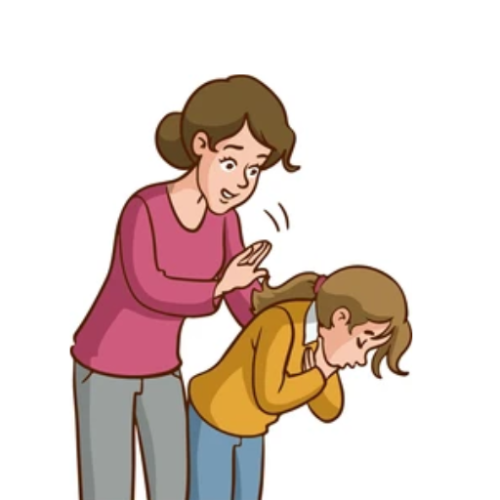
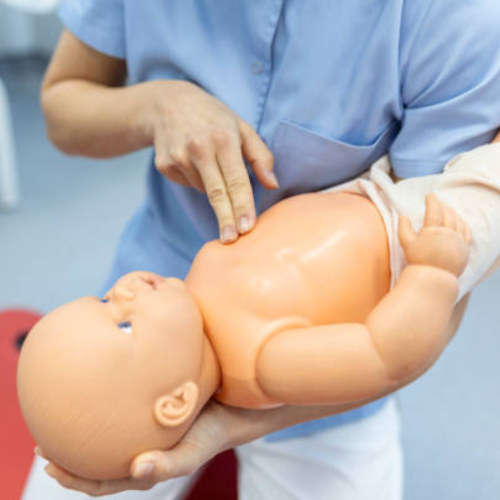
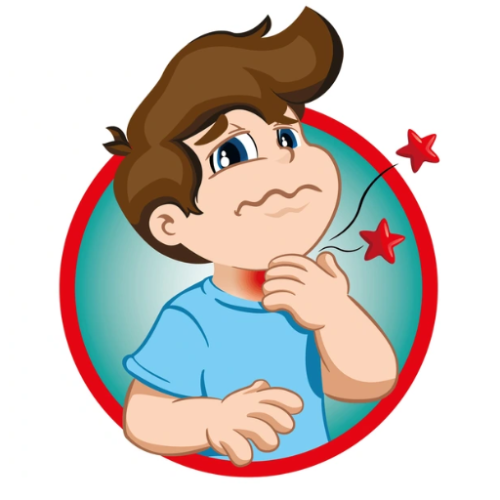
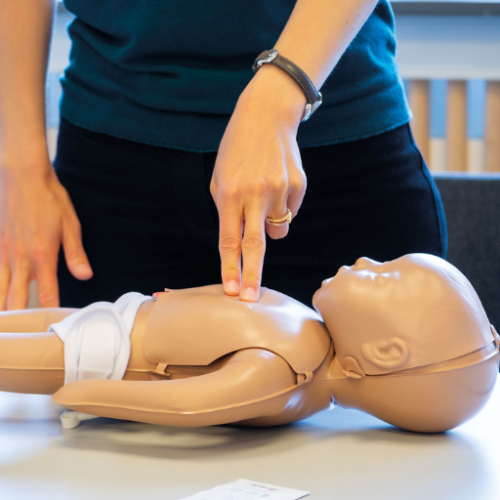


 Login with Google
Login with Google Login with Facebook
Login with Facebook